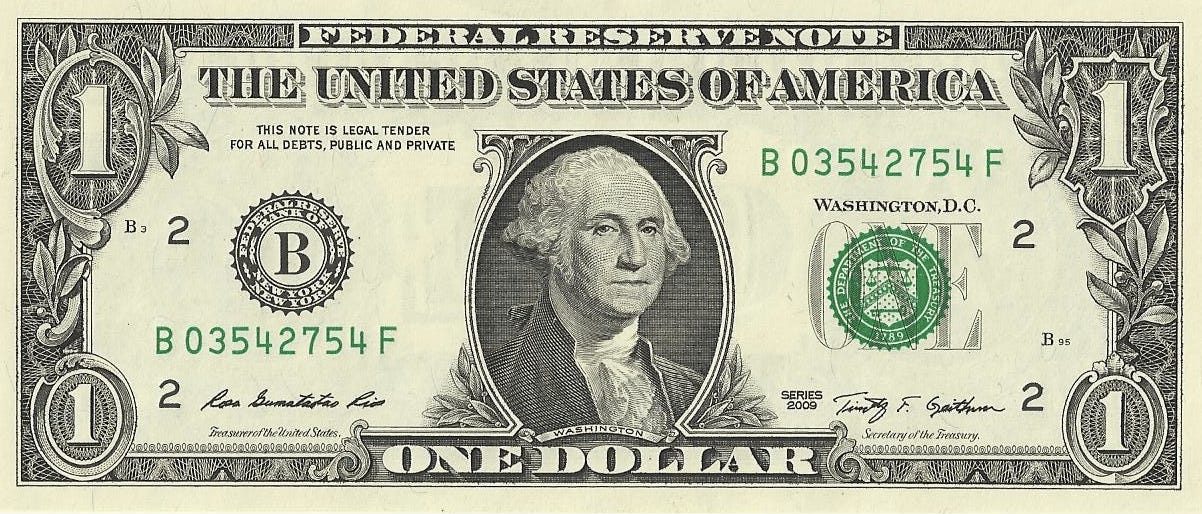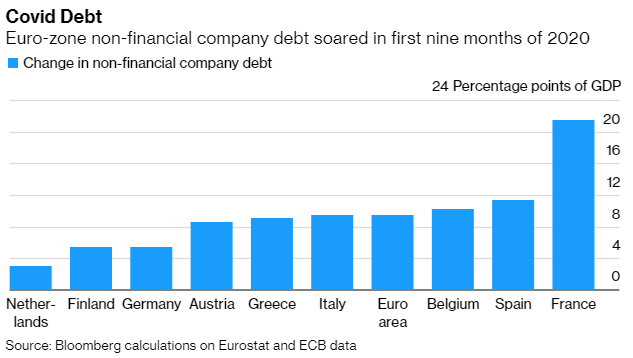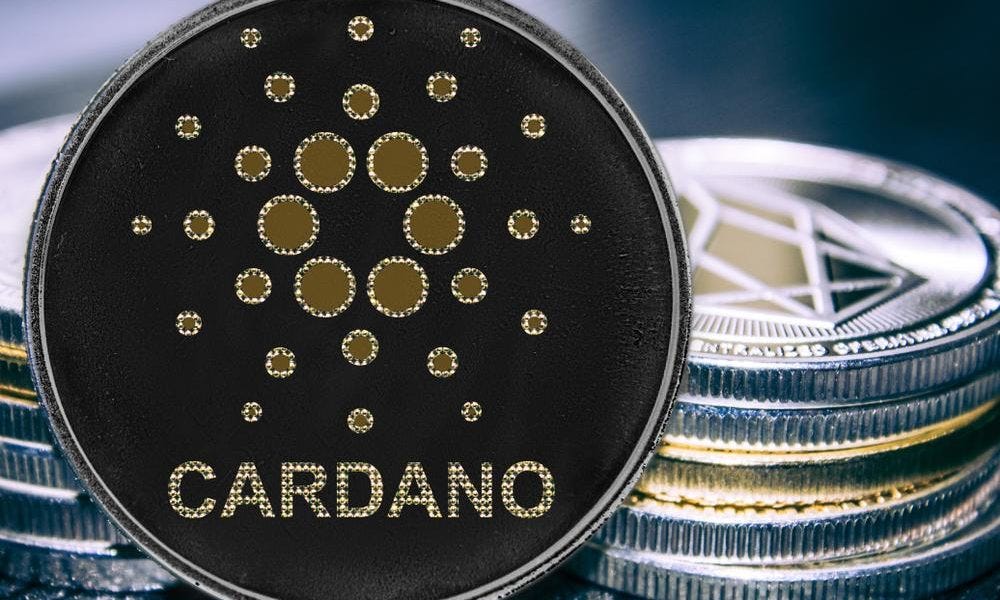Crypto Download #60
Biden's $1.9 Trillion Relief Bill Advances to House, Dollar Strengthens vs Other Currencies, Bitcoin ETF, Goldman Restarts Crypto Desk, Grayscale Buys a Ton of LTC, NFTs & ETH Competitors are HOT
Excited to have you on this macro bitcoin and crypto journey. Please share the newsletter with anyone who may be interested in joining us. Follow me on Twitter for Live Updates: @mverklin
Macro
Virus & Vaccines:
U.S. Cases Fell 61% Last Month; WHO Issues Warning: Virus Update
New York Covid-19 Variant Expands Reach in U.S. With 735 Cases
Biden's $1.9 trillion COVID bill advances to House floor: The U.S. House of Representatives Rules Committee on Friday approved rules for debating legislation containing President Joe Biden’s $1.9 trillion plan to address the human and economic toll of the COVID-19 pandemic, advancing the bill to the House floor. Read More.
Fed policy changes could be coming in response to bond market turmoil, economists say: While the Federal Reserve may not raise its benchmark interest rate for years, there are growing expectations it may tweak policy soon to address some of the recent tumult in the bond market. The moves could happen as soon as the upcoming March 16-17 Federal Open Market Committee meeting, according to investors and economists who are watching recent action closely and expect the central bank to address some distortions that have occurred. One possible move would the third iteration of Operation Twist, a move the Fed last made nearly a decade ago during market tumult around the time of the European debt crisis. Another could see an increase in the rate paid on reserves to address issues in the money markets, while the Fed also might adjust the rate on overnight repo operations in the bond market. The mechanics of Operation Twist involve selling shorter-dated government notes and buying about the same dollar amount in longer-duration securities. The objective is to nudge up shorter-term rates and drive down those at the longer end, thus flattening the yield curve. Read More.
Dollar index in fourth straight session of gains; Aussie picks up: The dollar was up for a fourth consecutive day on Tuesday, after a recent spike in bond yields challenged the market consensus for dollar weakness in 2021, but riskier currencies rose as bond markets calmed and stocks recovered. Rising yields have spooked markets in recent weeks, with participants worried that an economic recovery from the impact of COVID-19, combined with fiscal stimulus, could cause a jump in inflation from pent-up consumer demand when lockdowns end. But market sentiment has improved and riskier currencies have recovered this week as the bond market calmed. Read More.
“The market is in two minds at the moment and there’s a bit of a pull and push between these two stories…One story is that the Fed’s going to keep interest rates low forever and therefore we’re going to have this movement into higher yield, and the other story is actually no Fed rates won’t be as low forever, in fact the Fed could be one of the first central banks to hike.”
IMF Warns Europe’s Firms Need Equity to Save 15 Million Jobs: European governments must help businesses boost their equity or face a wave of bankruptcies and unemployment that could cost 15 million jobs, according to analysis by the International Monetary Fund. The Fund estimates massive public cash handouts during the pandemic helped save 30 million jobs, but the share of insolvent companies still increased, with small firms particularly affected. To lift European business out of danger, it said a combination of public and private support totaling 2% to 3% of economic output is needed. Read More.
Bitcoin
Cboe Says It’s Seeking Approval to List Bitcoin ETF in U.S: Cboe Global Markets Inc. is seeking approval to list and trade shares of what could be the first Bitcoin exchange-traded fund in the U.S. Cboe in a Monday filing with the U.S. Securities and Exchange Commission sought the green light for the VanEck Bitcoin Trust. VanEck Associates Corp. in December applied to start an ETF tracking the largest cryptocurrency. Last month Canadian securities regulators cleared the launch of the Purpose Bitcoin ETF, making it the first to gain regulatory approval in North America. Cboe said in the filing the cryptocurrency ecosystem has “progressed significantly,” citing among other things products investing in Bitcoin futures as well as the emergence of regulated custodial services for digital assets. Read More.
Goldman Sachs Set to Jump Back Into Cryptocurrency Trading: Goldman Sachs Group Inc. is restarting a trading desk for cryptocurrencies amid a surge in the value of Bitcoin. The Wall Street bank will begin offering Bitcoin futures among other products by mid-March after halting a similar effort started in 2018, according to the person, who asked to to be named because the plans haven’t been announced. Crypto was once shunned at elite firms like Goldman Sachs, but is now gaining credibility as other banks and financial institutions outline their efforts. BNY Mellon said in mid February that it will hold, transfer and issue digital currencies, a step it called the first by a global bank to provide clients with such services. Mastercard Inc. has also said it will allow cardholders to transact in cryptocurrencies on its network. The firm is “actively engaging” with central banks around the world on their plans to launch new digital currencies, it said last month. Read More.
Bitfarms Targets 5% of Bitcoin's Hash Rate With 48,000 New Miners: Canadian Bitcoin mining company Bitfarms has bought 48,000 new mining machines. With this move, the firm’s operational hashing capacity will grow by a factor of eight from current levels by December 2022. The miners will be delivered by MicroBT, a Chinese manufacturer of mining equipment and Bitfarms’ supplier of choice. The company says that over the past eight months it has acquired over 12,000 of MicroBT mining rigs, increasing its hashing capacity to 1.0 EH/s. The new equipment will be delivered over the next two years on a monthly basis and installed at Bitfarms’ hydro powered facilities located in the province of Quebec. Bitfarms’ interim goal is to reach 3.0 EH/s of hashing power by December 2021, and to increase it to over 8 EH/s by the end of 2022 when the last batch of machines is expected to arrive. Bitcoin’s current global hashing power is around 159 EH/s. That means Bitfarms could potentially account for up to 5% of it–provided the current values remain unchanged. This percentage will likely shrink, however, as Bitcoin's hash rate is rising considerably. Read More.
Crypto
Grayscale Bought 80% of All Litecoin Mined in February: Crypto fund manager Grayscale Investments has bought the majority of Litecoin mined last month. Grayscale currently holds over 1.44 million Litecoin ($248.33 million), making it the firm’s third-largest crypto holding after Bitcoin and Ethereum. Miners produced over 201,600 Litecoin in the past 28 days. But as the supply increased, Grayscale customers were on the other end picking the majority of the new coins up. In the last 30 days, Grayscale’s Litecoin Trust (LTCN) acquired 174,900 Litecoin. Read More.
NFTs Are Booming, But They’re Nothing New in the Art Market: The work in question is a short video created by Mike Winkelmann, an artist who goes by Beeple. But what Rodriguez-Fraile sold was not an everyday video file. The art is attached to something called a nonfungible token, or NFT. Like the cryptocurrency Bitcoin, NFTs run on blockchain technology. Unlike Bitcoins, each NFT can be a unique digital property—one NFT can represent ownership of a specific work of art. It can also be designed to suit a creator’s needs: NFTs connected to Beeple’s artworks, for instance, give him a 10% royalty every time his art changes hands. Far more important, Beeple’s NFTs have his signature and proof of sale built into their code. There’s no way to fake or forge or replicate one of his artworks, at least as long as the NFT is considered integral to the work. Read More.
Cardano Becomes a Multi-Asset Blockchain With Today’s Hard Fork: The Cardano blockchain, which runs the ADA token, will become a multi-asset chain with its hard fork today. Named “Mary,” the hard fork will allow users to create tokens that run on Cardano natively, just as ADA does. Enabling new tokens was one of the first big use cases that caught on for Ethereum, enabling 2017’s multi-billion dollar initial coin offering splurge. Read More.
Media
The Nation State Case for Bitcoin with Balaji Srinivasan
This DJ sold NFT art for $11.7M!
FEWOCiOUS – How A 17yo Created An Online Digital Art & NFT Empire
Cheers,
Verks
**This is not financial advice. Investing in bitcoin and cryptocurrency is extremely risky. Please do your own research. The ideas and news presented in this newsletter are my personal opinions and meant for informational and entertainment purposes only.














